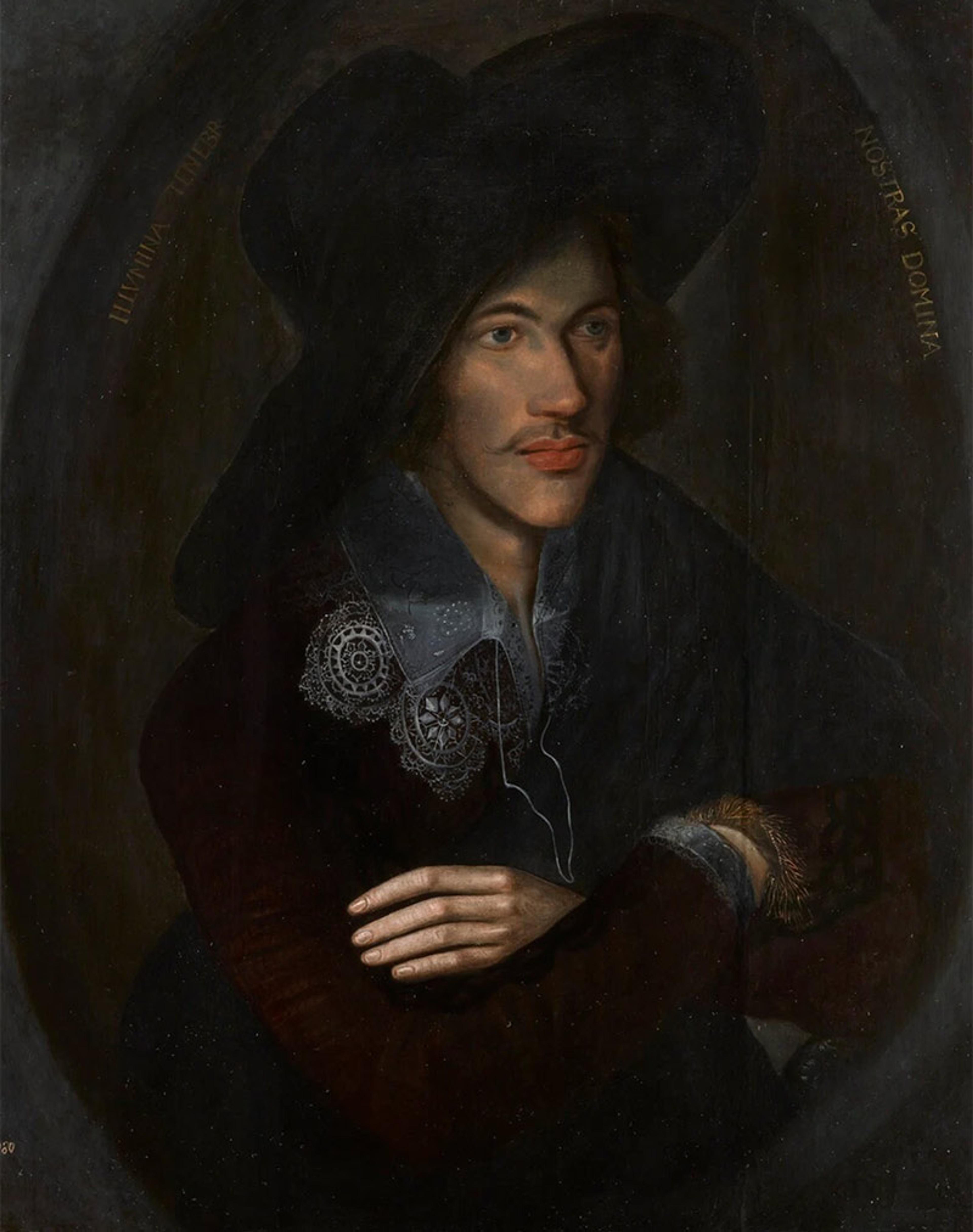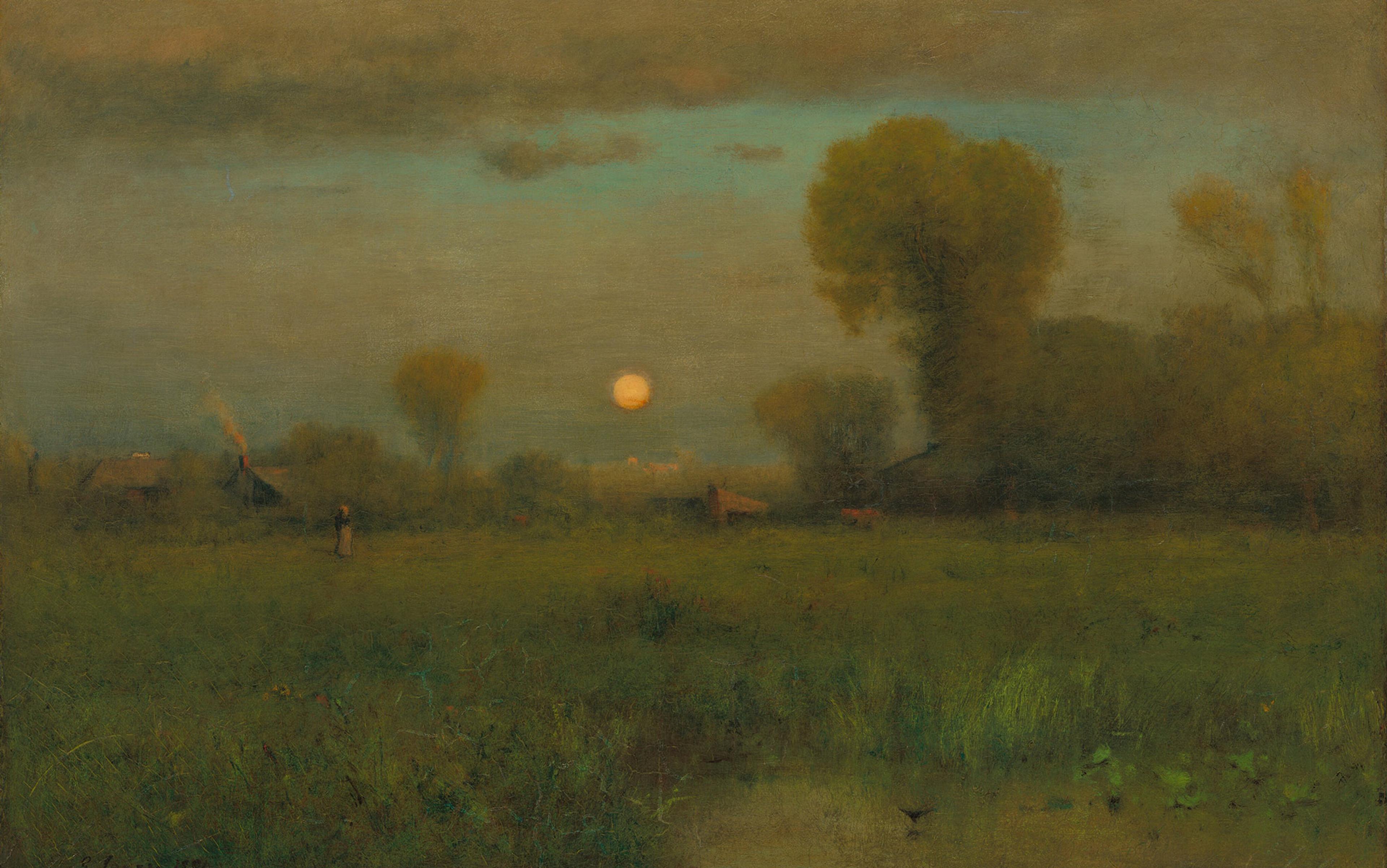‘Shall I compare thee to a summer’s day?’ The opening line of William Shakespeare’s most famous sonnet might lead you to think that you’re being prepared for a weather report. But that is only part of what awaits you. Shakespeare’s sonnet – like all sonnets – is a mechanism, a kind of a machine. Its parts work both together and against each other so as to exercise the mind of the reader. When you work with it, as you enter its world, you get the literary equivalent of a workout at the gym.
The history of poetry is a history of forms, many of which we learn in school. We learn about the ode, which praises a person or a thing; the elegy, which laments the loss of love or life; the haiku, with its limited syllable counts; the ballad, which tells a story. But none of these forms does as much cognitive work as the lowly sonnet. ‘Scorn not the Sonnet,’ wrote William Wordsworth. He knew whereof he spoke.
The sonnet first appeared in 13th-century Italy. A cleric named Giacomo da Lentini is usually credited as the first sonnet writer. His contemporary Dante Alighieri helped refine the form, before he turned his hand to his much longer Divine Comedy. Sonnet means ‘little sound’. It seems to have evolved out of an earlier Italian form called the strambotto, which consisted of stanzas of six or eight lines. The sonnet involved putting two of these stanzas together to produce a little poem of 14 lines, divided into eight lines and six lines – an octave and a sestet – with a break in the middle called a volta.
These numerical groupings may seem abstract, but they are what makes the sonnet work. They allow the writer to divide the poetic world in two – to depict two versions of the same event, or two emotional states that can co-exist only in a kind of tension. ‘I love you madly and swear eternal fealty [octave] but [volta] I see now that you are a scheming traitor [sestet].’ Or vice versa: ‘I know that you are a scheming traitor [eight lines] but I still love you madly [six lines].’ What happens in the octave will be contradicted in the sestet – or confirmed, or expanded, or parodied. In other words, the sonnet works through a double movement. Sometimes, the stakes are very high. John Donne berates his ‘black soul’ for its sinfulness – but then reassures it, through the volta, that not all is lost: ‘Yet [my italics] grace, if thou repent, thou canst not lack.’

To read through a sonnet is to be faced with an aptitude test, a questioning of your cognitive and moral capacities. It articulates the flexibility of the self. Shakespeare’s sonnet about the summer day takes us in surprising directions. Of his beloved summery friend, he writes: ‘Thou art more lovely and more temperate …’ So far, so good. Yet, as the octave unfolds, he points out that even summer days are uneven, and natural beauty is variable: some days are too hot, others not hot enough:
Rough winds do shake the darling buds of May,
And summer’s lease hath all too short a date.
Sometime too hot the eye of heaven shines,
And often is his gold complexion dimmed;
And every fair from fair sometime declines,
By chance, or nature’s changing course, untrimmed.
We start to worry that being compared favourably to a summer’s day might not be such a great compliment after all. ‘Shall I compare thee? Well, OK, I will – but be aware that these days are not all perfect and that, in any case, autumn is coming and they won’t last long.’ The change wrought by the passage of time is, however, stopped short right at the volta, which recasts everything that has come before:
But [my italics] thy eternal summer shall not fade,
Nor lose possession of that fair thou ow’st,
Nor shall Death brag thou wand’rest in his shade,
When in eternal lines to Time thou grow’st.
A single well-placed switching mechanism – the word ‘but’ – stops time
The key word is ‘but’, right at the point where the octave gives way to the sestet. It tells us that the beloved doesn’t have to worry about growing old at all – summer day or no – since Shakespeare’s poem will live forever:
So long as men can breathe, or eyes can see,
So long lives this, and this gives life to thee.
A poem that first appeared to be about good weather, warm days and the rhythms of nature now turns out to be a celebration of the power of verse. A single well-placed switching mechanism – the word ‘but’ – stops time.
Once sonnet writers developed ways of pitting the two parts of the poem against each other, they experimented with breaking up each half into still more conflicting thoughts. You can pull the same trick with the sestet, giving us three lines that say one thing, then three that shift perspective. ‘If I would find deliverance anew,’ says the 16th-century French poet Louise Labé in the sestet of one of her most powerful poems: ‘I must live far beyond sight of me / or be sure to stay as far away from you.’ There’s no escape from love, not even in the wild.
Many of the greatest sonnets, like those of Shakespeare, or Donne, flip back and forth, shifting terms over and again as each line follows the one before it. ‘Oh make thy self with holy mourning black,’ says Donne to his grace-seeking soul. ‘Or wash thee in Christ’s blood,’ he adds, evoking the Saviour’s blood’s ability to make things white. The movement of the poem, line after line, mirrors the restlessness of the sinful soul, desperate for comfort. To read sonnets, then, is to be forced to hold different propositions in the mind, setting them against each other, seeing how they shape one another. The poem is a tool for the cultivation of judgment.
The first superstar sonnet writer was Dante’s literary heir, the 14th-century poet Petrarch, who wrote more than 300 sonnets, all dedicated to a woman named Laura. The sonnet form allowed him to describe the uniqueness of his love, while exploring the damage it was doing to his soul. Petrarch invented a new use for the sonnet by stringing together his poems to form a loose narrative. Later, poets such as Alexander Pushkin and Vikram Seth would construct entire novels out of strings of sonnets. It’s an approach that allows writers to play with continuity and rupture, imposing distinct viewpoints on the reader as we move through the story, breaking up the action with ironic commentary.
Petrarch was a master of this technique. He is the cartographer of the suffering soul. And what is emotional turmoil for the poet is a cognitive puzzle for the reader, who follows along intently. The presence of his lady, says Petrarch in an octave, calms his desires and relieves his torments, but the moment she is away (in the sestet) his soul is miserable. It leaves his body in misery as he thinks about her. The contrast between the two is not only biographical, it is spiritual and psychological. A war between duty and desire. Maybe he’s a fool to lie awake when he should be getting some much-needed shuteye. But to live life fully means sometimes losing sleep. We readers have to judge which is better, both for him and for us.
We’re challenged to place ourselves in the position of the poet as they work through stages of hope and grief
The theme of illusion versus reality, I suggest, is virtually built into the sonnet. It’s why sonnets have been particularly popular in contexts shaped by social anxiety – Renaissance Europe, with its elaborate courtly rituals, being one example. Petrarch was more or less a solitary practitioner of the form, but the great Renaissance sonneteers, such as Thomas Wyatt and Philip Sidney, use it to explore the emotional challenges of living at court, where rivalries and power games shape social life. They give voice to the disheartening contrast between their fantasies of power and pleasure (‘You’re as beautiful as a doe’) and their disappointments (‘But, alas, you’re the king’s mistress’). This theme of disappointment became something of an obsession in the 19th century, when the French poet Charles Baudelaire used the sonnet as a tool for raging against bourgeois society, with its fake pieties and deep corruption. Petrarch and Wyatt are wounded by love: Baudelaire is wounded by life itself. His sonnet ‘Beauty’ sets out the risks faced by anyone who writes, and falls for the way beauty ‘Inspires the poet with a love as lone / As clay eternal and as taciturn.’ Yet no revelation of truth ever comes, as Baudelaire’s figure of Beauty offers nothing but ‘pure mirrors’ to bewitch the poet with illusions.
Petrarch, Wyatt and Baudelaire enjoy a universal reach, since we’ve all been disappointed and deluded at some point. Their sonnets depict foil and counterfoil, illusion and reality, aspiration and disappointment, desire and deception. Reading them, we’re constantly challenged to place ourselves in the position of the poet as they work through progressive stages of hope and grief. It’s an exercise that jolts you out of your comfortable state and asks you, for the space of a line or two, to consider what happens when your world is turned upside down.
The cognitive challenges that I link to sonnet-reading are complicated further when thinking about rhyme. Many odes and elegies are written in rhyming couplets, or in blank verse. Not the sonnet. Because of its intricate, condensed form, it is a veritable wonderland of rhyming sounds. The trusty octave, with its balanced structure of two four-line stanzas, can give us enclosed rhymes (abba), or alternating rhymes (abab). Both patterns set up links between sounds, as we are called back from line 3 or line 4, to line 1, to consider their connections. Then, just as we are being lulled by the octave pattern, the wild sestet in the second part of the poem blows things open. It might give us three-line patterns (efg, efg) or reverse that and give us efg, fge, pulling us back as we try to move forward; forcing us to stop and consider what line 9 and line 14 might have in common, and why the poet chose to rhyme them. The intricate rhyming structures of the sonnet show us the poem in conversation with itself, echoing its own voices, responding to its own music.
French poets developed a novel technique of placing a pair of rhyming lines right in the centre of the poem, set off from everything else, after the octave, in lines 9 and 10. Often they appear to present a coherent, self-enclosed statement – a conclusion or point of rest, or a summing up, like the chorus of a popular song. We can look for it, wait for it, take a breath and relax with it, after the twisting turmoil of the opening lines. Labé anchors her poem about fleeing her lover by telling us, in the middle, that she’s found a solution to her anguish, ‘and distract myself from thoughts of love / a most lonely woodland grove I prove.’ She rhymes the word for ‘distraction’ (distraire) with ‘lonely’ (solitaire) – a summing-up that seems to resolve her emotional torment. If you’re unhappy, just leave town. But then we realise that we’re still in the middle of the poem, with four lines to go. Maybe leaving town is no solution after all? Will a new pattern of rhymes be set up? Will it echo what we’ve just read? What new complications will be introduced before we reach line 14?
The English sonnet solved this problem of how to make the second half of the poem rhyme by setting a rhyming couplet, not in the middle, like the French did, but at the very end. This turns the poem into a structure with three stanzas of four lines each, followed by two. Shakespeare used it to offer commentary or conclusion to the emotional drama we’ve just been reading about. After comparing his beloved to a summer’s day, only to reflect that this subjects them to the ravages of time, he concludes that being praised by him is a better deal for the beloved than just being beautiful: poetry, after all, lasts longer than good weather: ‘So long as men can breathe or eyes can see, / So long lives this, and this gives life to thee.’ It’s a couplet that you can extract from the rest. You can learn it by heart and carry it around in your head, even if you leave the rest of the poem behind. Shakespeare believes that poetry is eternal, and the rhyming English sonnet allows him to make his case, while tying everything together. No other poetic form does this.
Sonnets are mechanisms; machines that challenge our emotional states and cognitive powers. You can’t speed-read them. They slow us down. They push us this way and that, forcing us to reconsider our thinking at every turn. The apparently simple form of the 14-line poem contains within itself an entire emotional drama of illusion and deception, crisis and resolution. Universes appear and pass away.
But if you can break the sonnet into four chunks – why not go further, as the American poet Ted Berrigan did in his collection The Sonnets (1964). Berrigan pasted together bits of original verse, lines from advertising jingles, fragments of telephone conversations, in such a way that you can’t tell whether you should begin reading at the top, bottom or middle. In a Berrigan sonnet, you can start at line 14 and then maybe jump to line 6, then to line 9, and so on.
In Joe Brainard’s collage its white arrow
He is not in it, the hungry dead doctor.
Of Marilyn Monroe, her white teeth white-
I am truly horribly upset because Marilyn
and ate King Korn popcorn,’ he wrote in his
of glass in Joe Brainard’s collage
Doctor, but they say ‘I LOVE YOU’
and the sonnet is not dead.
takes the eyes away from the gray words,
Diary. The black heart beside the fifteen pieces
Monroe died, so I went to a matinee B-movie
washed by Joe’s throbbing hands. ‘Today
What is in it is sixteen ripped pictures
does not point to William Carlos Williams.
Indeed, the sonnet is not dead. But how do these parts make a whole? The phrase ‘Of Marilyn Monroe’ in line 3 seems to be the last part of line 13 (‘What is in it is sixteen ripped pictures’). The closed quotation marks after the word ‘popcorn’ in line 5 are opened way down in line 12, which ends with the word ‘Today’. The sonnet has a formal, recursive structure that folds in on itself; the sense emerges if you read line 1, then line 14; line 2 then line 13; line 3 then line 12, and so on.
What earlier poets like Shakespeare did with rhyme – asking us to hold a sound from early in the poem in our ears so as to hear it echoed later on – Berrigan does with syntax and grammar. It’s a new way of reading. The reader can combine and recombine at will, generating new versions of the story. The contemporary poet Jen Bervin goes a step further by placing a ‘net’ or filter over the text of Shakespeare’s sonnets, turning them into son-nets by blanking out some phrases and letting others shine through. Thus, she generates a new set of poems built on fragments of Shakespeare.
Reading poetry is a good way to spend time. It cleanses the mental palate and scrubs away the emotional cobwebs. Sonnets are particularly healthy because they challenge our judgment and cognitive capacity, knocking us about – from triumph to tragedy; misery to humour – in the space of a few lines. You won’t find the sublime or the tragic in your sonnet world, or the slow climaxes of the ode or elegy. But you will find a condensed drama of the movements of the heart as it trundles through life.
When I was much younger, before family responsibilities and faculty meetings, I did daily devotions in the religion of the sonnet. I bought a large hardbound notebook with blank pages – the kind they use for sketching. Each morning, as I drank my coffee and planned my day, I copied out a sonnet from one of my favourite poets. I wrote it out, word for word, in the centre of the page, and then wrote commentary around the edges. I drew lines between words that seemed to be related, added brackets, stars and circles, and tried to scribble in useful thoughts or questions. My daily sonnet became a form of training, like jogging, or meditation. It focused my mind and challenged my emotions. I’ve never enjoyed poetry more. I recommend it as a daily exercise.






